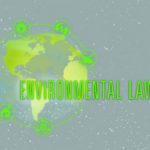In the event of contamination, a mechanism must be in place to clear the contaminated site quickly and safely. And, if there is someone responsible for this contamination then there must be a method of ensuring that person is held accountable.
This is where the Environmental Response and Liability Act comes in to place. The purpose of this act is to provide a fast and safe solution to the clearance of contaminated areas as well as to identify the responsible parties and recoup the costs of the clearance from those parties.
Anyone found to have disposed of hazardous waste at the contaminated site would be deemed as a responsible party. The Environmental Response and Liability Act program is overseen by the Environmental Protection Agency.
The Environmental Response and Liability Act gives the Environmental Protection Agency the power to force responsible parties to fund the clean up of the contaminated site or get the responsible parties to carry out the clearance if deemed safe to do so.
However, if no responsible party is identified or is unable to fund the clearance through bankruptcy etc. a trust fund is in place, which can be used to fund these clean-ups.
This Act was introduced in 1980, and upon its enactment introduced a tax on chemical industries and petroleum industries. This act also provided the authority for direct federal response to the threat of contamination that could pose a risk to public health and environmental health.






